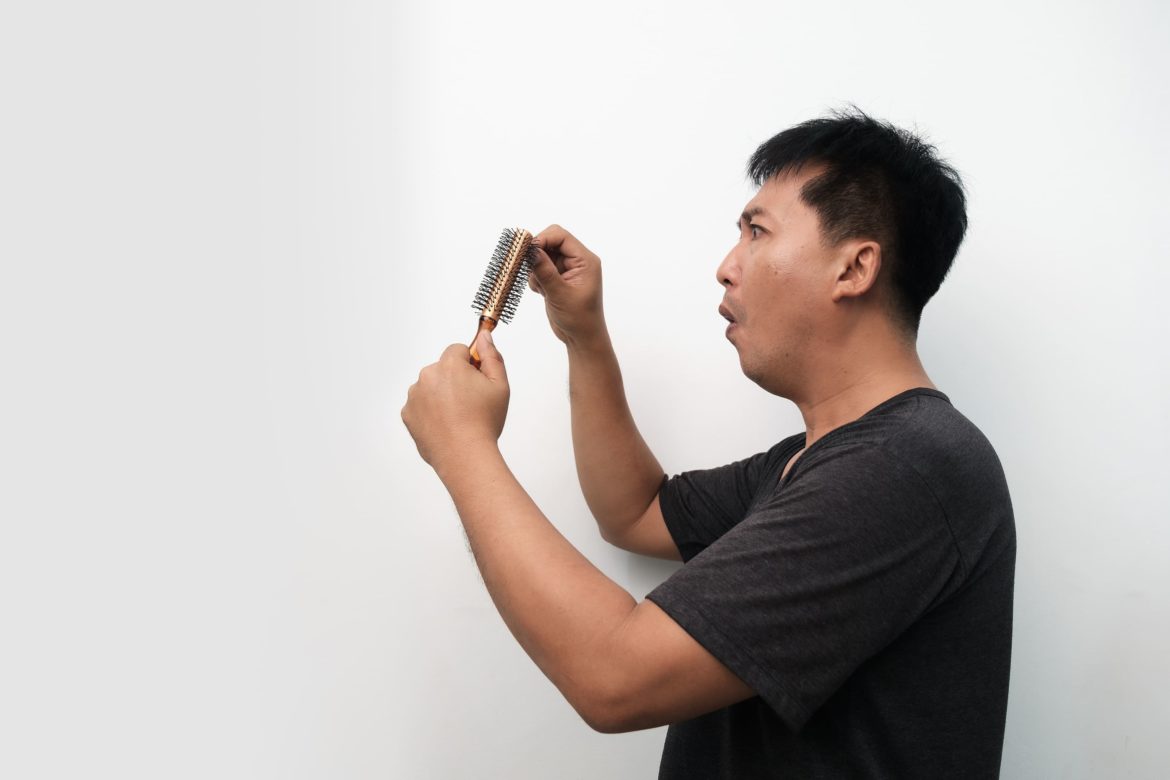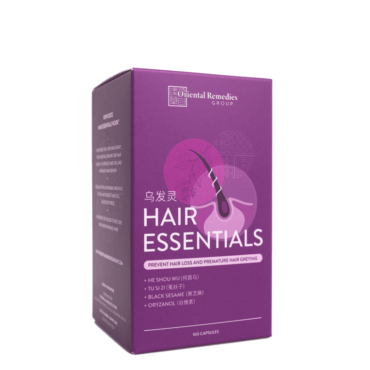From the modern medical perspective, alopecia refers to a gradual loss of hair, partial or complete, occurring anywhere on the head or on the body. It can be broadly classified into scarring alopecia as well as non-scarring alopecia. While scarring alopecia is best evaluated by a dermatologist, non-scarring alopecia can be treated in an outpatient setting. Common non-scarring alopecia conditions include [1]:
| Condition | Presentation |
| Pattern hair loss
|
Also known as Androgenetic alopecia (AGA), it is a non-scarring hair loss condition that primarily affects the top and front of the scalp |
| Tinea capitis
|
A fungal infection of the scalp that causes patches of hair loss that may be red and scaly. Diagnosis is done with a dermascope and it must be treated systemically. |
| Telogen effluvium | A non-scarring, non-inflammatory alopecia caused by physiologic or emotional stress. Once the precipitating cause is removed, the hair typically will regrow. |
| Trichotillomania | A disorder where a person has a strong urge to pull their hair out. Treatment is aimed at controlling the underlying psychiatric condition. |
| Trichorrhexis nodosa | When defects in the hair shaft break secondary to trauma and is often a result of hair styling or overuse of hair products. |
| Anagen effluvium | An abnormal diffuse loss of hair during the growth phase caused by an event that impairs the mitotic activity of the hair follicle, most commonly chemotherapy. |
Pattern hair loss, also known as androgenetic alopecia (AGA) is a hair condition that primarily affects the top and front of the scalp. It manifests itself as both Male-Pattern Hair Loss (MPHL) as well as female-pattern hair loss (FPHL). In MPHL, the hair loss presents as a receding front hairline or loss of hair on the top of the scalp or a combination of both. In FPHL, this usually appears as gradual thinning at the part line, followed by increasing non-localised hair loss spreading from the top of the head.
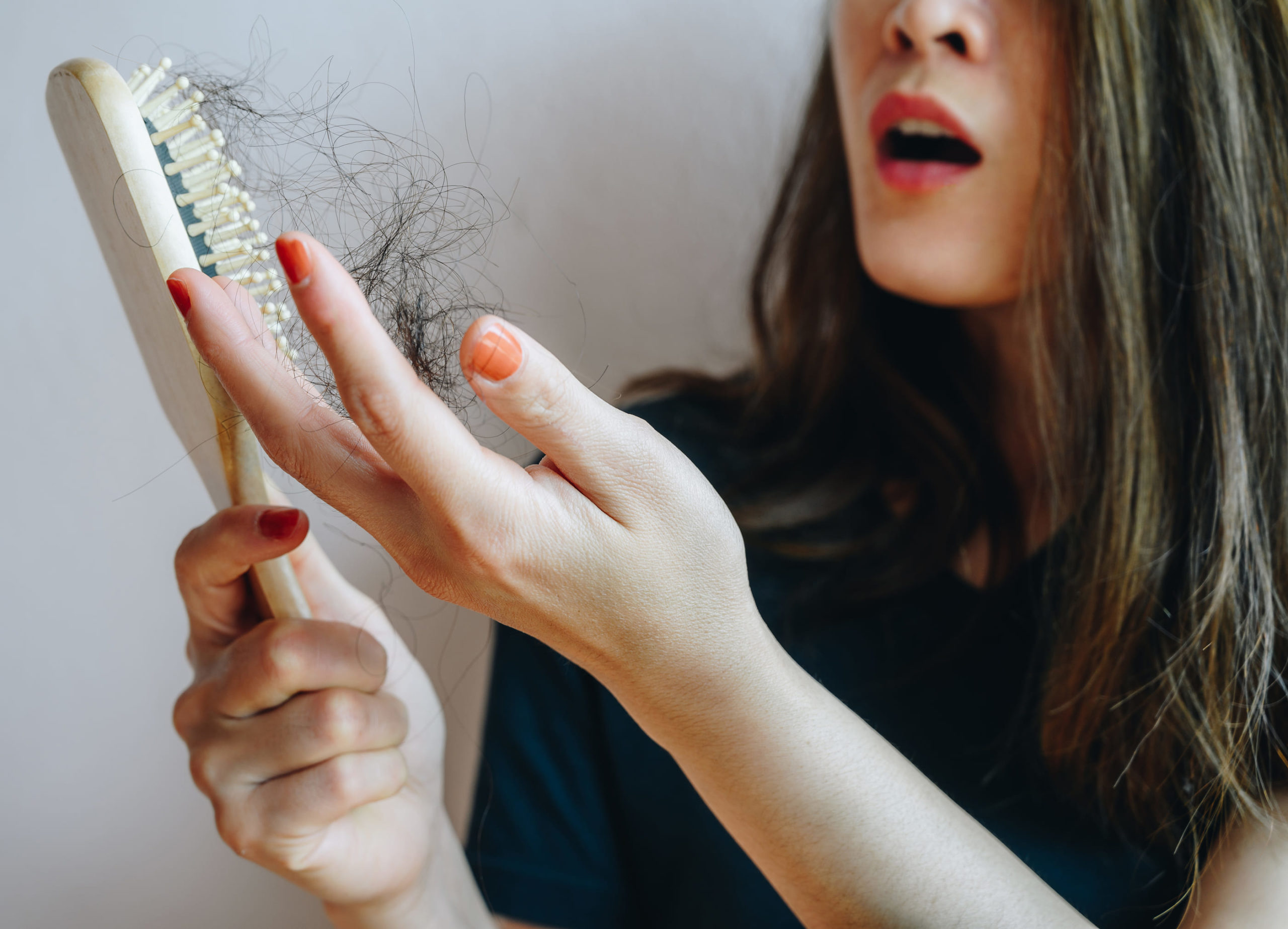
Myth 1: Only older people suffer from baldness
While most men experience male pattern baldness from middle age onwards, about 25% of them will begin before 21[2]. As for women, even though more than half of women would have Female Pattern Hair Loss (FPHL) by 79 years of age, 12% first develop clinically detectable symptoms by age 29[3]. Hence, developing hair loss in your twenties is possible especially if you have a strong family history.
Myth 2: Bald men have more testosterone
Elevated testosterone levels do not cause hair loss. Male pattern baldness is due to how sensitive your hair follicles are to Dihydrotestosterone (DHT) – a kind of androgen hormone that is up to 3 times more potent than testosterone. DHT also binds to Androgen receptors (AR) and about 10% of testosterone is converted to DHT on a daily basis. Variations in the androgen receptor gene can increase androgen receptivity in your scalp follicles, making you more likely to experience male pattern hair loss[4]. High DHT levels shrink your hair follicles as well as shorten the hair cycle. This causes hair to fall out faster, grow out thinner and be more susceptible to breakage. DHT also increases the time for your follicles to grow new hairs once old hairs fall out[5].
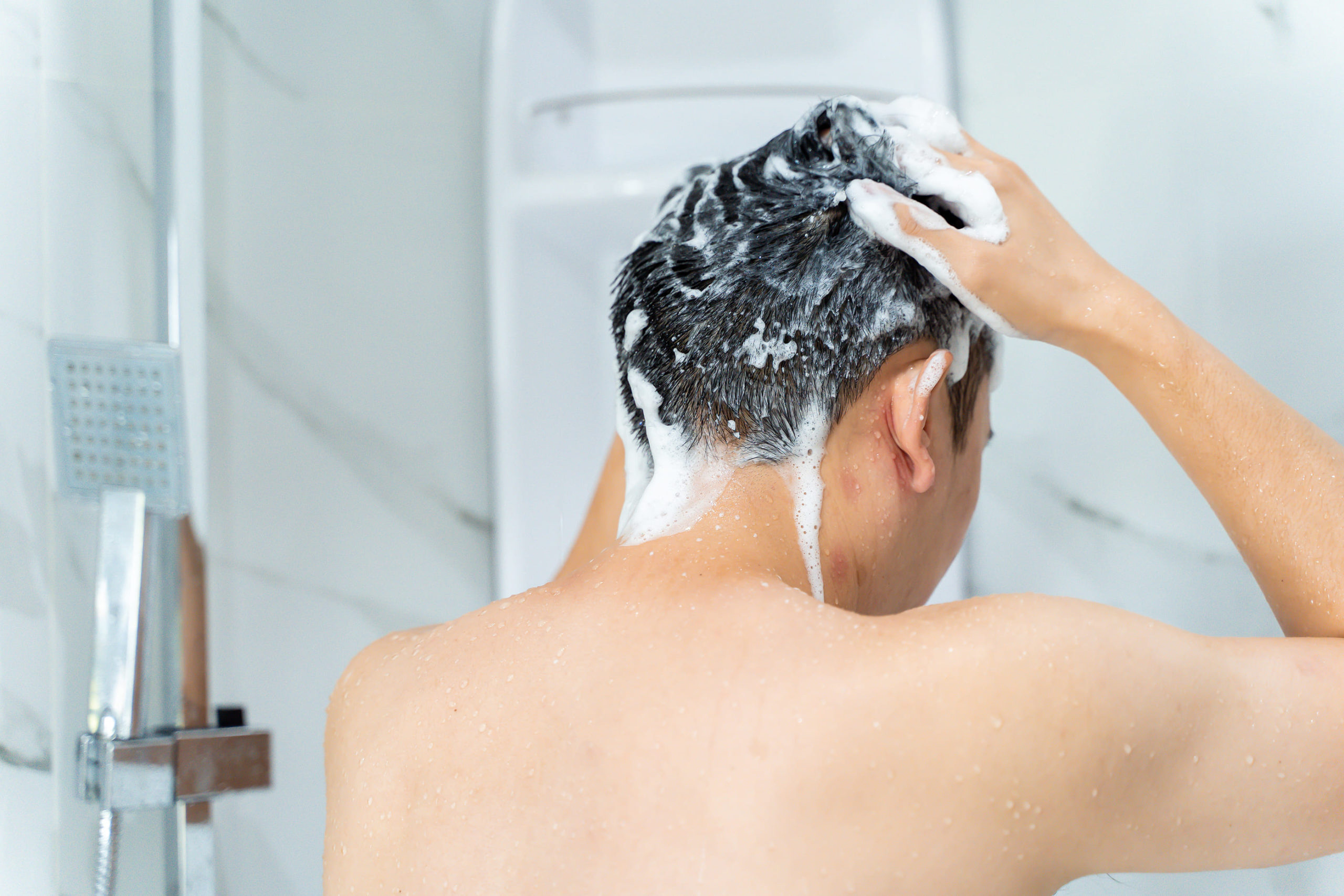
Myth 3: Washing and shampooing your hair too much can cause hair loss
Hair seen collecting on the shower drain inlet might appear as if more hair is lost when washing or shampooing. However, this is hair that would have fallen out regardless whether you washed with shampoo or not. Our hair goes through different phases of growth and it is during the dormant phase where it stops growing and eventually drops out of the hair follicle. A new strand of hair would then replace the same spot.
Hair follicle cycle
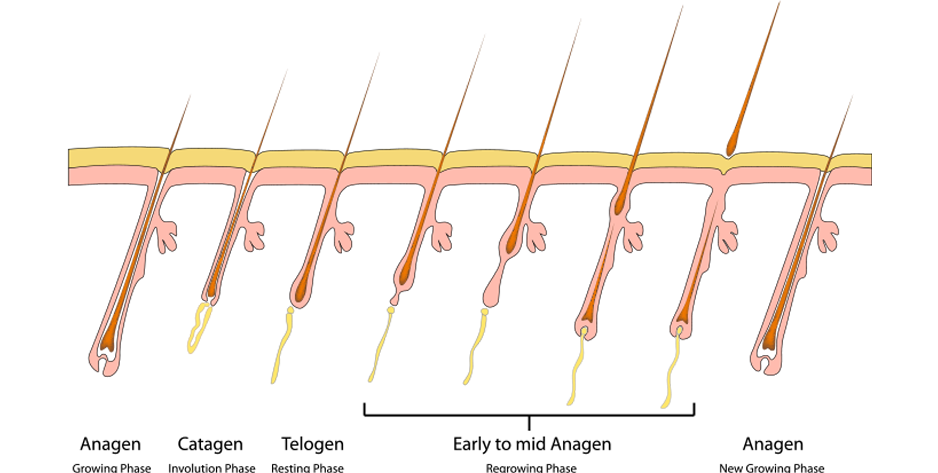
Myth 4: Vitamins can stop hair loss
Vitamins (C and D) and minerals (iron, zinc, selenium) play an important role in the growth of hair and development of a normal hair follicle. However, hair loss cannot be averted if it is not caused by micronutrient deficiencies, Furthermore, it is best not to consume too many vitamins as overdosing on certain vitamins like A and E might even speed up hair loss[6].
Myth 5: Stress causes permanent hair loss
Stress is very much a part of life while living in an urban environment. We get stress from work, family and sudden events that happen when least expected. This stress can cause a spike in adrenaline levels that damage the melanocytes, which are the hair cells that produce melanin, the pigment that gives our hair colour[7].
Telogen effluvium is another condition caused by stress resulting in non-scarring and non-inflammatory temporary hair loss. Hair will usually regrow once the stress factor is removed[8].
What is hair loss from a TCM perspective?
TCM believes that pathological hair loss is a warning sign from our body telling us that some changes to our lifestyle are needed to maintain healthy hair growth. Just as we need to water, plough the soil and spread fertiliser to ensure healthy crop growth, the same is needed to nourish our hair follicles and stimulate healthy growth of hair. Traditional modalities such as acupuncture, massage and herbal medication can help one achieve that.
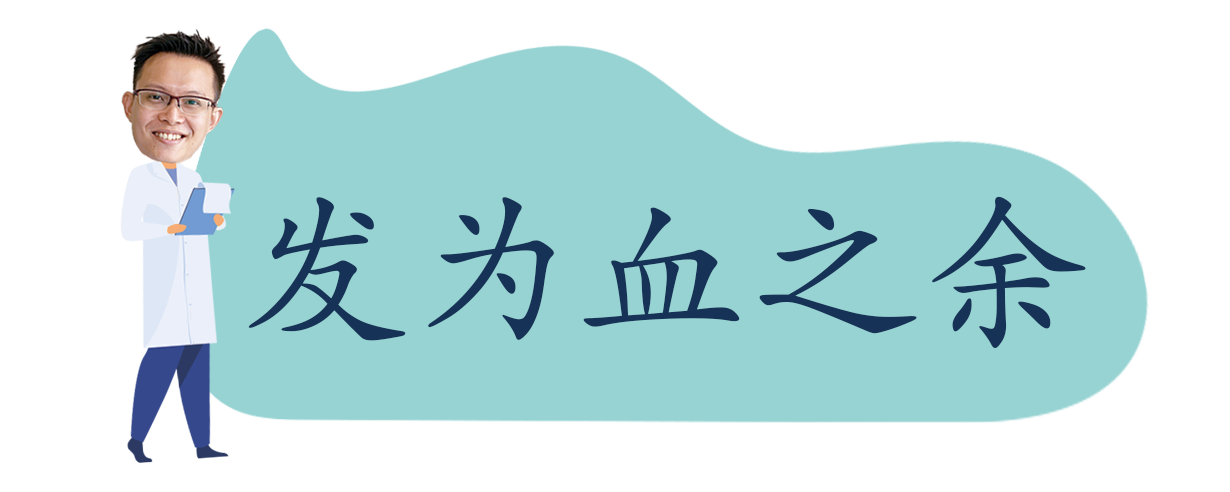
There is a saying in TCM that mentions that health of the hair lies in the Blood, hence the saying “发为血之余” Fa Wei Xue Zhi Yu. The health of the Blood then depends on the quality of function of the Organs like the Kidney, Liver, Spleen, Heart and Lung. The Kidney stores essence of which quality shows in the hair. The Liver stores Blood while the Heart is in charge of the blood vessels, the activity of these two Organs ensure healthy blood flow to the scalp for hair growth. The Spleen is in charge of transforming the food we eat into nutrients for hair growth and sustenance while the Lung is associated with the exterior part of our body thus ensuring that nutrients are brought to the top of the head. Thus, from the TCM perspective, the health of the hair is closely related to the health of the Organs in our body.
Boost hair growth with these TCM treatments
- Herbal medication*
Alopecia is often seen among the young to middle-aged as Singapore lies on the tropics, coupled with our humid weather and love for spicy food among our populace, our sebaceous glands would tend to overproduce oil to lubricate our hair. Herbs that get rid of dampness include 薏苡仁 Yi yi ren (Chinese barley) as well as 茯苓 Fu ling (Poria).
Conversely, alopecia in the elderly is usually due to ageing. Advanced age causes our organ functions to weaken resulting in a sluggish metabolism. Chronic stress in our lives causes the Qi and Blood to stagnate and eventually weaken thereby causing patterns of disharmony like 肝肾气血亏虚 Gan shen qi xue kui xu (deficiency in the Liver, Kidney, Qi and Blood). Herbs that help nourish the Liver and Kidney include 女贞子 Nv zhen zi (Ligustrum lucidum) 何首乌 He shou wu (Polygonum multiflorum) and 黑芝麻 Hei zhi ma (Black sesame seeds). Herbs that move Qi and Blood include 川芎 Chuan xiong (Ligusticum striatum) and 香附 Xiang fu (Cyperus rotundus).
*It is advised to visit your trusted TCM practitioner to get the dosage/ prescribed herbs based on your body constitution. Please do not self-medicate.
If the taste of drinking TCM herbs is not your cup of tea (pun intended), a capsule supplement (Hair Essentials) with hair tonics like the above-mentioned herbs and minerals beneficial for hair growth and development can be taken on a regular basis to help promote growth of new hair.
Shop Hair Essentials here
Hair essentials is formulated with TCM herbs like 何首乌 He shou wu (Polygonum multiflorum) and 黑芝麻 Hei zhi ma (Black sesame seeds), Oryzanol – a substance extracted from rice bran oil and vitamin B complex.
TCM herbs like He shou wu and Hei zhi ma have been used for centuries to help darken and nourish the hair. Oryzanol has been proven to help induce hair follicle formation and enhance hair growth via upregulation of growth factors[9], and help darken hair by promoting melanin synthesis[10]. Vitamin B complex plays a variety of functions from keeping hair healthy, generating new cells to maintain cellular function for healthy hair growth. Best of all, as Hair essentials come in a capsule you can simply take 2 capsules 2 times daily with food without having to experience the taste of herbs lingering in your mouth.
- Acupuncture
Another common TCM treatment for hair loss is acupuncture. Common acupuncture meridians that are used include those on the Spleen, Liver, Gallbladder, Kidney, Conception meridian and Governing meridian.
| Meridian | Acupoints |
| Spleen | 血海 (Xue Hai) SP10, 三阴交 (San Yin Jiao) SP6 |
| Liver | 太冲 (Tai Chong) LR3, 足临泣 (Zu Lin Qi) GB41 |
| Kidney | 太溪(Tai Xi) KI3 |
| Conception | 气海 (Qi Hai) CV6, 关元 (Guan Yuan) CV4 |
| Governing | 百会 (Bai Hui) GV20 |
You can also try massaging some of these common acupoints at home:
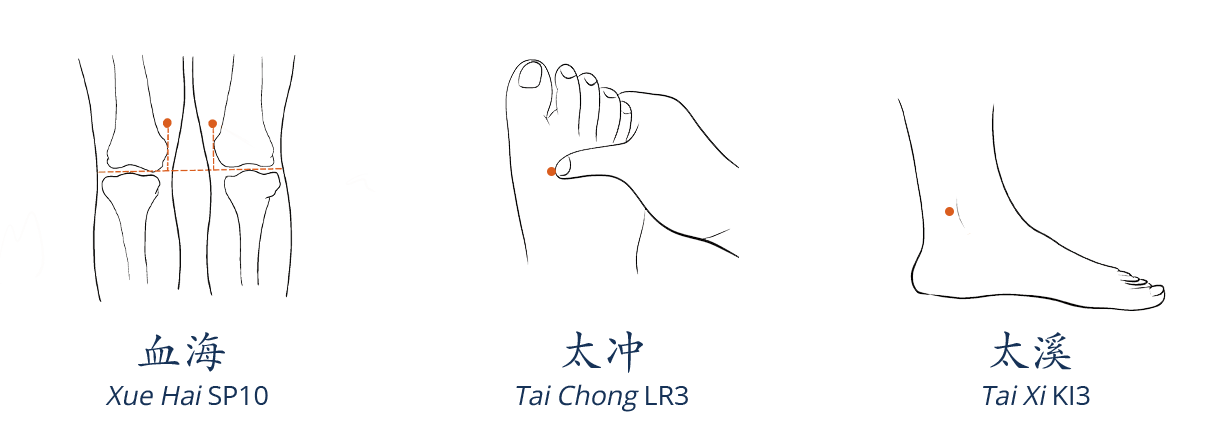
To locate Xue Hai: It is located 2 thumbs above and on the inner side of the patella.You should be able to feel the bulge of quadriceps muscle on the inner thigh, just slightly above and on the interior side of the knee joint.
To locate Tai Chong: Tender point between the big toe and second toe.
To locate Tai Xi: In the depression behind the protruding ankle bone.
How to massage (For all acupoints): Press on each acupoint with your thumb and massage for 1 minute each time.
Through acupuncture and specially tailored herbs suited to the individual, scalp health can be regained and hair loss can be reduced. TCM also believes that good lifestyle choices like a balanced diet high in fresh fruits and vegetables and low in oil, sugar and barbequed food is beneficial for our health. If possible, stressful activities should be avoided so that sleep quality can be ideal. Lastly, appropriate exercise is recommended as this will stimulate our body and improve blood circulation to all parts of our body.
Your healing is the most important!
If hair loss persists for more than 3 months despite best efforts to change lifestyle habits for the better, a consultation with a dermatologist is recommended to determine the type (scarring or non-scarrying) and severity of the hair loss condition. TCM is able to assist by correcting patterns of disharmony in the body and complement the western medicine treatments given. A holistic approach to tackle alopecia is the correct way forward as it taps on advances in medical technology and ancient methods that are safe and effective. Please contact us at +65 8087 0486 for a personalised consultation.
—–
This article is written by Physician Lim Jing Yang.
Physician Lim is a TCM physician at Oriental Remedies Group, a patient-centred healthcare provider offering effective treatments grounded in TCM and enhanced with medical technology.
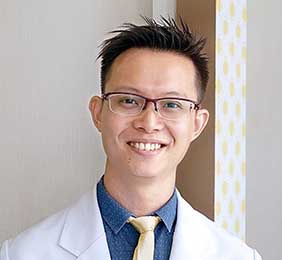
Note: all words in Italics mentioned henceforth refer to the TCM organ system and not the anatomical organs/terms referenced in western medicine.
Disclaimer:
The information on this page is for information and educational purposes only. Such medical information may relate to disease, injury, drugs and other treatments, medical devices and/or health products. Medical information does not amount to advice, and if advice is needed an appropriate professional help should be sought. The disclaimer asserts that no warranties or representations are given in respect of the medical information, and that the website operator should not be held liable if a user suffers any injury or loss after relying upon the medical information.
All wellness assessments and technology-enhanced therapies using wellness device(s) are intended for use only for general well-being purposes or to encourage or maintain a healthy lifestyle, and it is not intended to be used for any medical purposes (such as detection, diagnosis, monitoring, management or treatment of any medical condition or disease). Any health-related information provided by these devices should not be treated as a medical advice. Please consult a physician for any medical advice required.
References:
[1]: https://www.aafp.org/pubs/afp/issues/2017/0915/p371.html
[2]: https://nashvillehairdoctor.com/hair-loss/myths/
[3]: https://www.ncbi.nlm.nih.gov/pmc/articles/PMC6322157/
[4]: https://www.healthline.com/health/dht#purpose-and-function
[5]: https://www.healthline.com/health/dht#treatment
[6]:https://www.ncbi.nlm.nih.gov/pmc/articles/PMC5315033/
[7]: https://www.prevention.com/beauty/a20508421/aging-hair-myths/
[8]: https://pubmed.ncbi.nlm.nih.gov/28925637/
[9]: https://www.jstage.jst.go.jp/article/bpb/37/1/37_b13-00528/_article/-char/ja/
[10]: http://www.tjps.pharm.chula.ac.th/ojs/index.php/tjps/article/view/606

